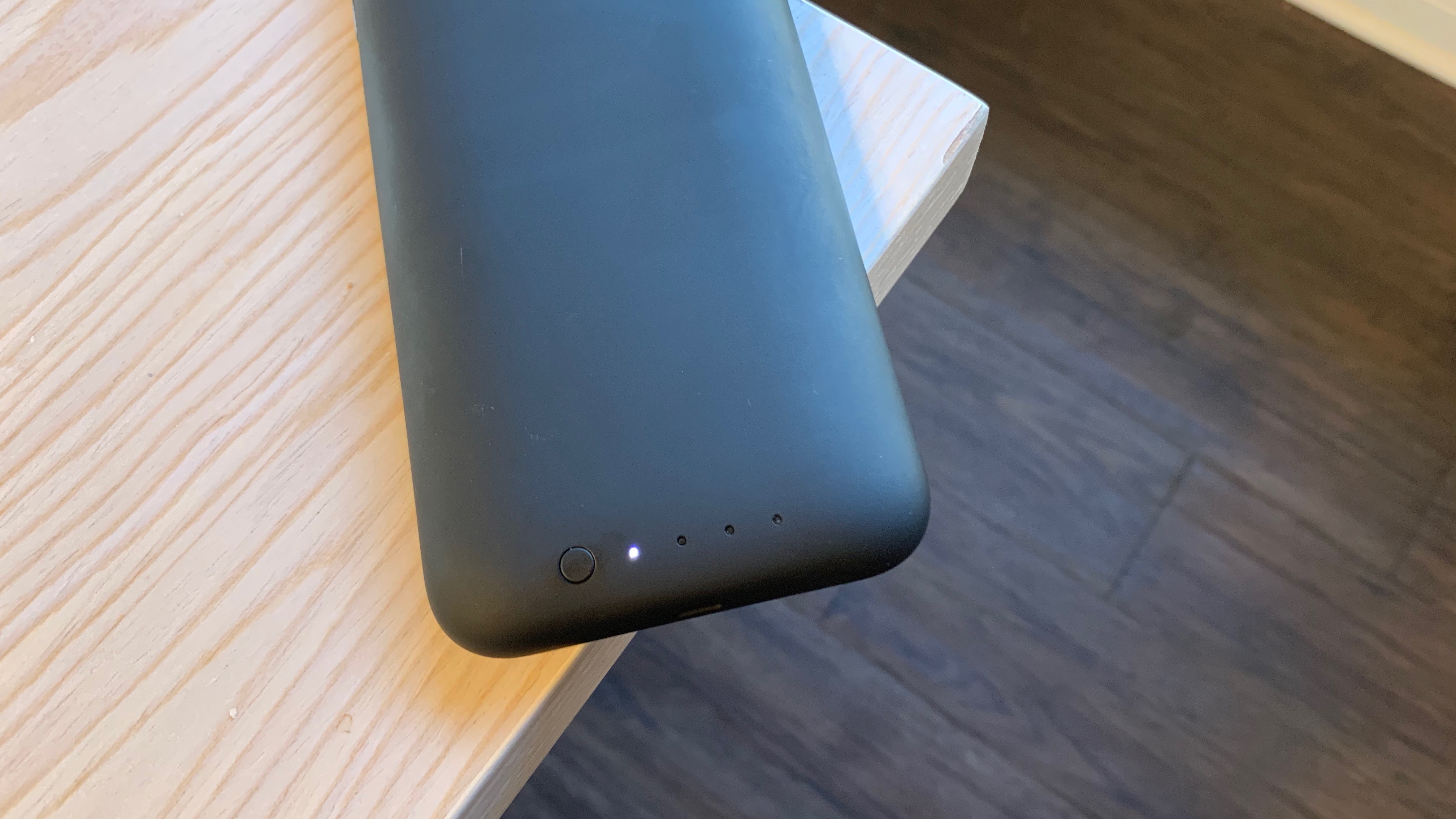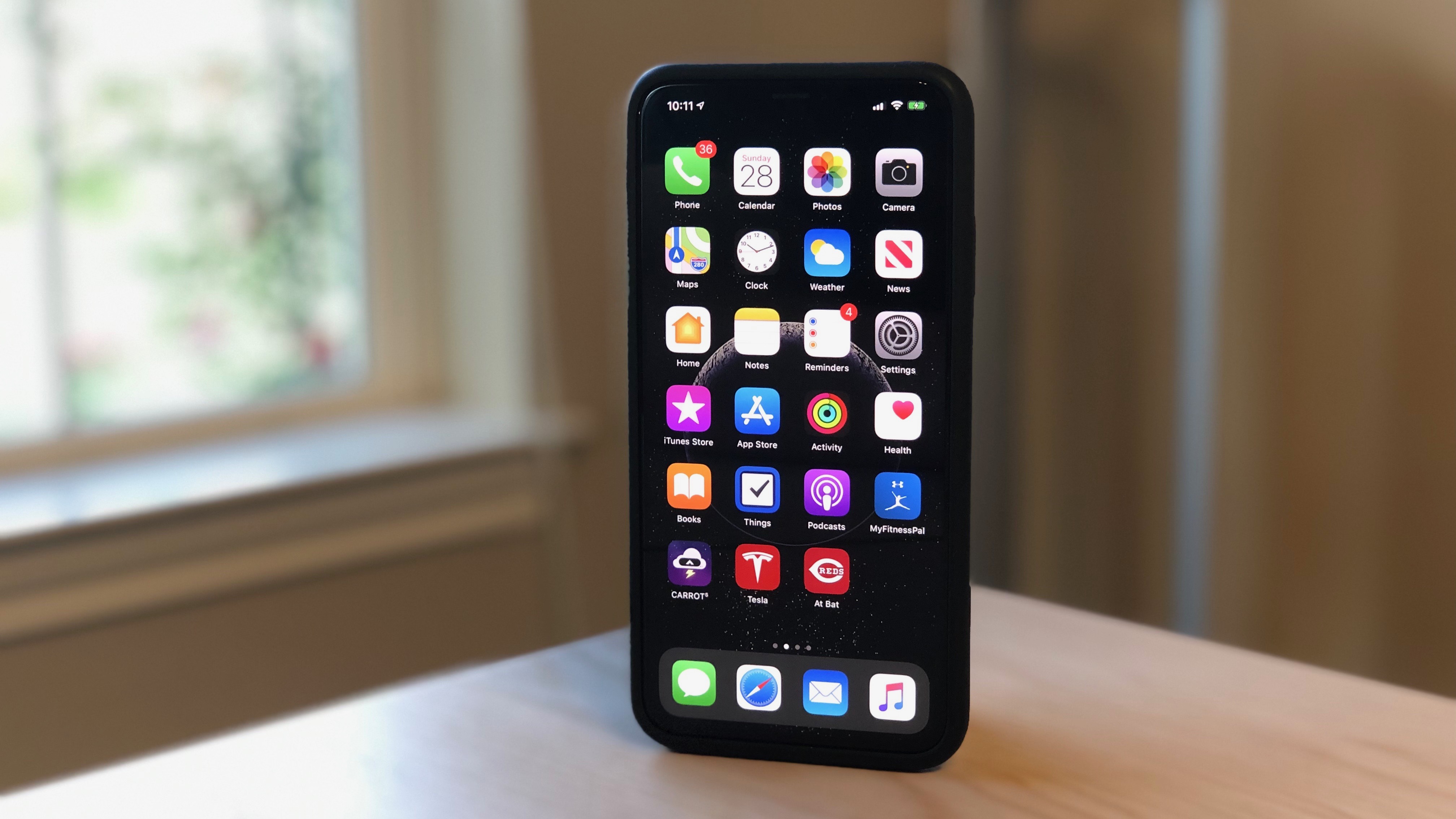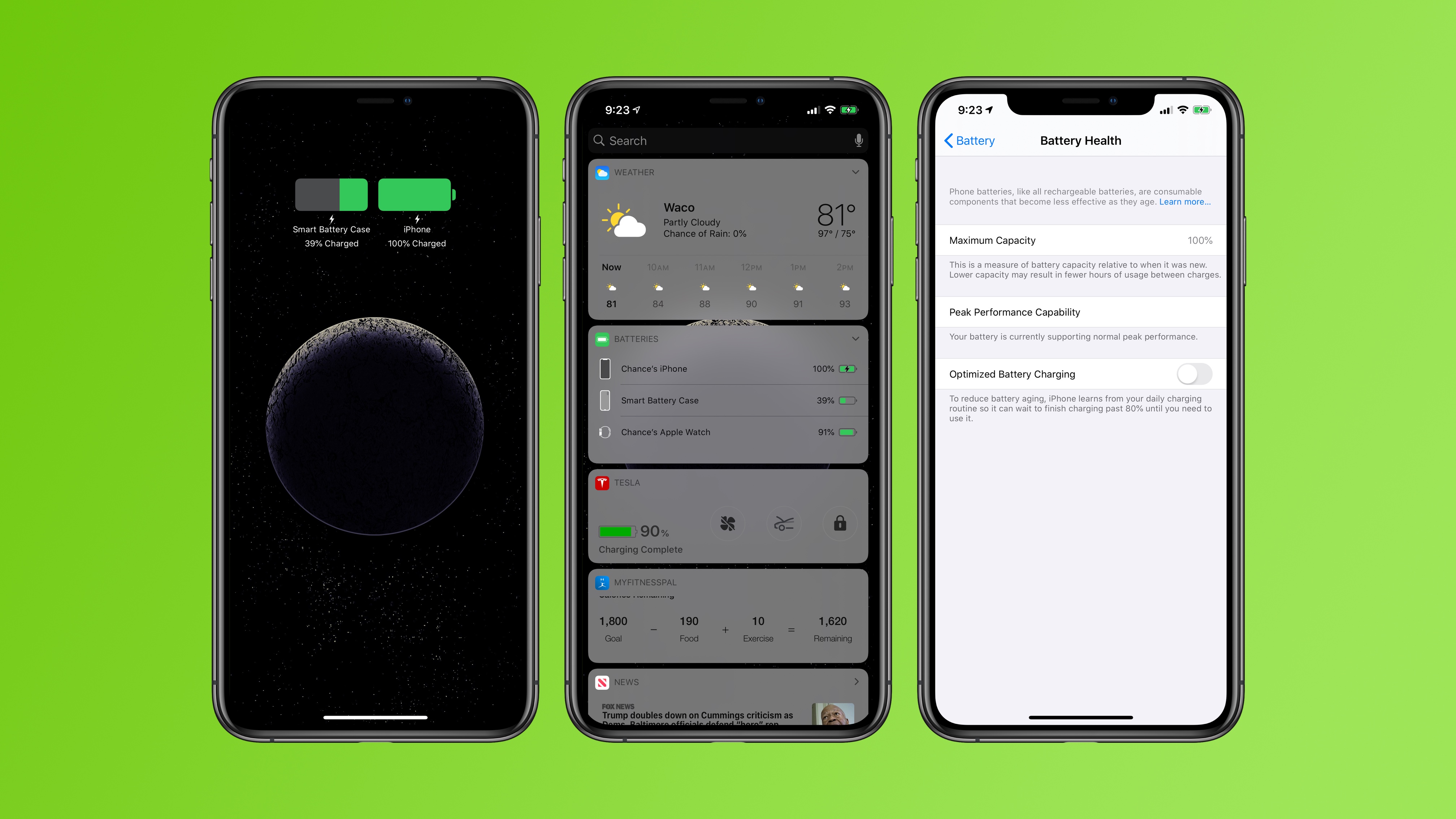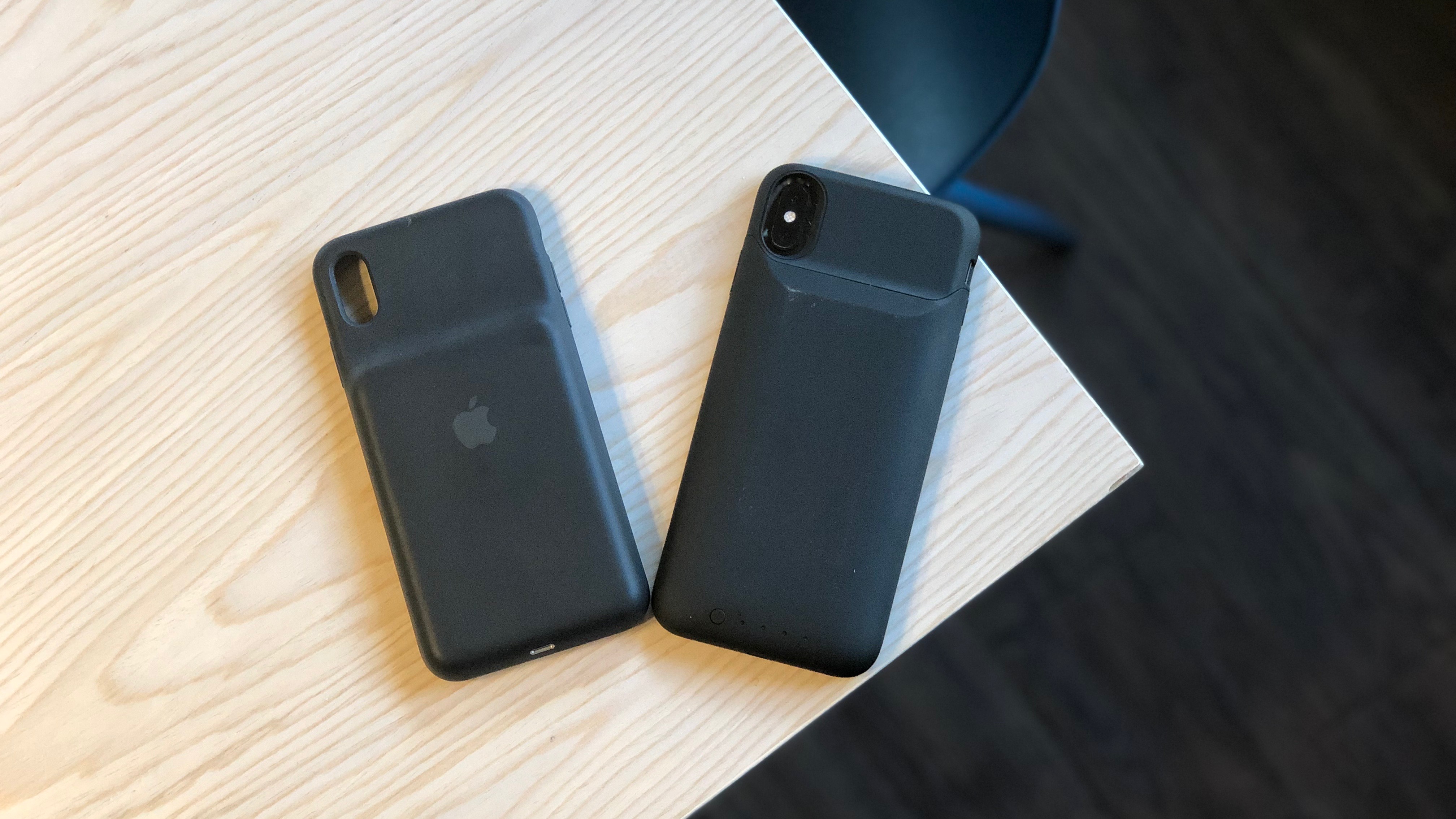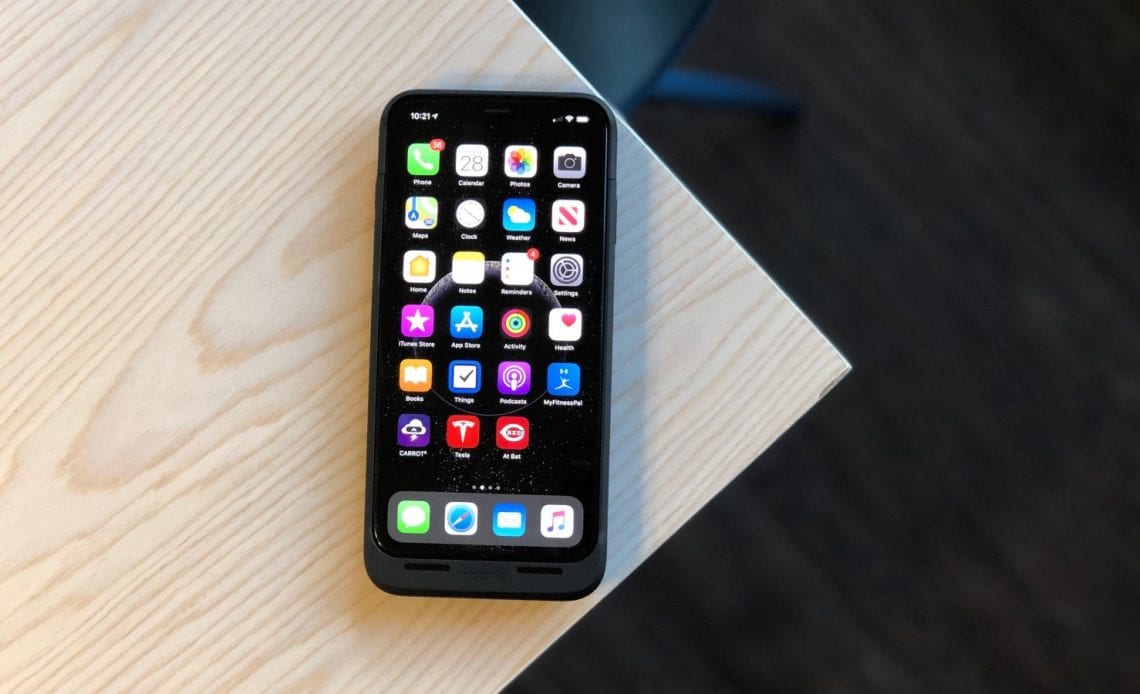
When the iPhone X was released in 2017, the battery case market was virtually nonexistent, with only a few aftermarket options available. For the iPhone XS, iPhone XS Max, and iPhone XR, however, there are several notable battery cases – including one from Apple itself.
Read on as we go hands-on with two of the best battery cases for iPhone XS.
Mophie’s Juice Pack Air is the newcomer to the iPhone battery case market. Mophie announced the product last month, joining the USB-C capable Juice Pack Access in its line of iPhone battery cases.
Design
In terms of design, the Juice Pack Air doesn’t stray far from the design of previous Mophie iPhone battery cases. Along the bottom of the device is an added chin with speaker cutouts and a Lightning port. Notably, the Lightning port on the Mophie Juice Pack Air does not support audio out or CarPlay. This means you’ll either have to rely on wireless headphones and wireless CarPlay, or take the case off completely.
If you value things like Lightning Audio and CarPlay, the Juice Pack Access might be a better choice as it leaves the Lightning port completely exposed.
If you’re using the iPhone XS Max (or even the iPhone XR), the chin at the bottom of the case does add a notable bit of size to the iPhone’s height. This makes it hard to use with one hand and reach the upper corners of the display for things like notifications and Control Center. There’s also a slight ridge between the case and the screen, which can make it harder to swipe up from the bottom of the display.
The case is made out of a relatively lightweight plastic material and weighs 76.5 grams for the hefty iPhone XS Max. The plastic material is nice to the touch and easy to take in and out of your pocket, compared to Apple’s Smart Battery Case, which is made from a silicone material.
Battery
What about power? The Juice Pack Air for iPhone XS Max packs an added 1,840mAh battery. The iPhone XS Max itself packs a battery that’s just over 3,100mAh, so that means you’ll get around 60% more battery life when you factor in the Juice Pack Air’s battery.
The Juice Pack Air for the iPhone XS features a slightly smaller 1,720mAh battery, but the proportions work out slightly better. This means you should get around 63 percent extra battery with the Juice Pack Air. The iPhone XR model features a 1,650mAh battery, which means you’ll get just under 60 percent extra battery life with the Mophie case.
The Juice Pack Air works more like an external battery pack than a battery case. This means that when you notice your iPhone battery getting low, you’ll have to press the power button on the back of the case to activate charging. We’ll touch more on Apple’s implantation of this in a moment, but I actually prefer the Mophie solution in many ways as it allows you to always have that added battery capacity in reserve if needed.
One notable feature of the Juice Pack Air battery case for iPhone is that it does support wireless charging. This means you charge both your phone and the case via any Qi charger – with your iPhone battery charging first, followed by the Juice Pack Air.
The biggest limitation here is that it only charges at 5W. Given that you’re recharging your phone and the case, it can take quite some time to replenish both via 5W wireless charging.
Another issue I have with the implementation of wireless charging on the Juice Pack Air is that it’s hard to track charging progress of the case. Qi charging requires you to lay your device flat on a charging pad, but the LEDs that indicate the case’s battery level are on the back of the case. Thus, you have to pick the device up and turn it over to see how much juice it has.
Ultimately, I found it much easier to recharge the Juice Pack Air with a Lightning cable than through wireless charging, but having the option of wireless charging is nice.
The Smart Battery Case for iPhone XS, iPhone XS Max, and iPhone XR was released back in January. For all of the details, be sure to check out our full review right here.
Design
The Smart Battery Case features a hump design on the back, making it clear where that extra battery pack is stored. The case is made from a soft touch silicone martial that makes it easy to hold, but also attracts fingerprints and lint relatively easily.
If you’ve used an Apple silicone case before, you’ll feel right at home with the Smart Battery Case’s feel, as well as its easy access to volume and power controls. You also get full access to your Lightning port, and it’s fully capable of audio output and CarPlay. Read more about the design in our review from January.
Battery
The iPhone XS, iPhone XS Max, and iPhone XR Smart Battery Cases initially made headlines for packing relatively small 1,369mAh batteries. In actuality, however, the cases feature boosted voltage, which actually improves battery performance.
It turns out the iPhone XS Smart Battery Case houses a 1369 mAh internal battery, rated at 10.1Wh. This is slightly more than the 8.96Wh battery found in the iPhone 7 Smart Battery Case. The XS Max case features the same battery as the XS.
What does this mean in real-world use? Here’s the battery life Apple says you can expect from your iPhone with the Smart Battery Case in use:
iPhone XR:
iPhone XS:
iPhone XS Max:
In contrast to the Mophie Juice Pack Air, the Smart Battery Case drains itself first, then switches to your internal iPhone battery life. I do think it would be useful to have the option of running down your internal iPhone battery first, then having the Smart Battery Case as an emergency backup option. Nonetheless, I was able to make it through most days with normal use without relying much on my internal iPhone XS Max Battery at all.
The Apple Smart Battery Case also supports Qi charging. One important thing to note is that it can be tricky to figure out the perfect placement on a charging pad like the Charge Stream Pad+. The Qi coils on the case are located in the center, which means you might have to balance it just right to account for the hump.
The biggest differentiator between the Mophie Juice Pack Air and the Smart Battery Case is the integration the latter offers with iOS. You can track battery life directly in iOS, and you see a popup showing battery life when you start charging.
One thing I do want to note – and this applies to the Mophie Juice Pack Air as well – is to make sure you turn off the “Optimized Battery Charging” setting in the “Battery Health” section of the Settings app in iOS 13. This feature is designed to “reduce battery aging” by waiting to finish charging past 80% until you need it. For instance, if you charge your iPhone overnight and have an alarm set for 6 a.m., this means your iPhone will wait to charge from 80 percent to 100 percent until right before your alarm
When charging overnight, both the Smart Battery Case and Juice Pack Air generally make your iPhone battery the priority. This means that the iPhone battery will charge to 100 percent before the cases start drawing juice. When your iPhone waits to charge until the last moment, however, the cases aren’t given enough time to charge before you wake up. Thus, you’ll likely wake up with an empty battery case unless you disable “Optimized Battery Charging.”
If you use a 10W or 12W charger, the iPhone and case will charge simultaneously at 5W. An 18W charger will fast-charge the iPhone first, then the case. 30W or higher chargers will fast-charge both simultaneously.
Other battery case options do exist for the iPhone XS, iPhone XS Max, and iPhone XR, oftentimes at cheaper prices than the Mophie and Apple options. They generally, however, aren’t MFi certified, so your mileage may vary, though many are well-reviewed on Amazon.
Both of these iPhone battery cases get the job done as they provide a notable bump in battery life. You’re not going to find an ultra thin and light battery case, and both of these cases affect one-handed iPhone use, particularly with the iPhone XS Max.
The Mophie Juice Pack Air is hindered by its inability to integrate as deeply with iOS as the Smart Battery Case. Likewise, the integration with iOS is what really sets the Smart Battery Case apart. Being able to easily track the case’s battery via iOS is an incredibly nice feature.
In terms of price, the Mophie Juice Pack Air is slightly cheaper at $99 for iPhone XS/X, iPhone XR, and iPhone XS Max. The Smart Battery Case retails for $129 for iPhone XS, iPhone XR, and iPhone XS Max. The Mophie Juice Pack Air is a nice option if you know you like the form factor and are looking to save a few bucks. The integration the Smart Battery Case offers with iOS, however, is unparalleled.
Author:
Source: 9TO5Google
Tags:




